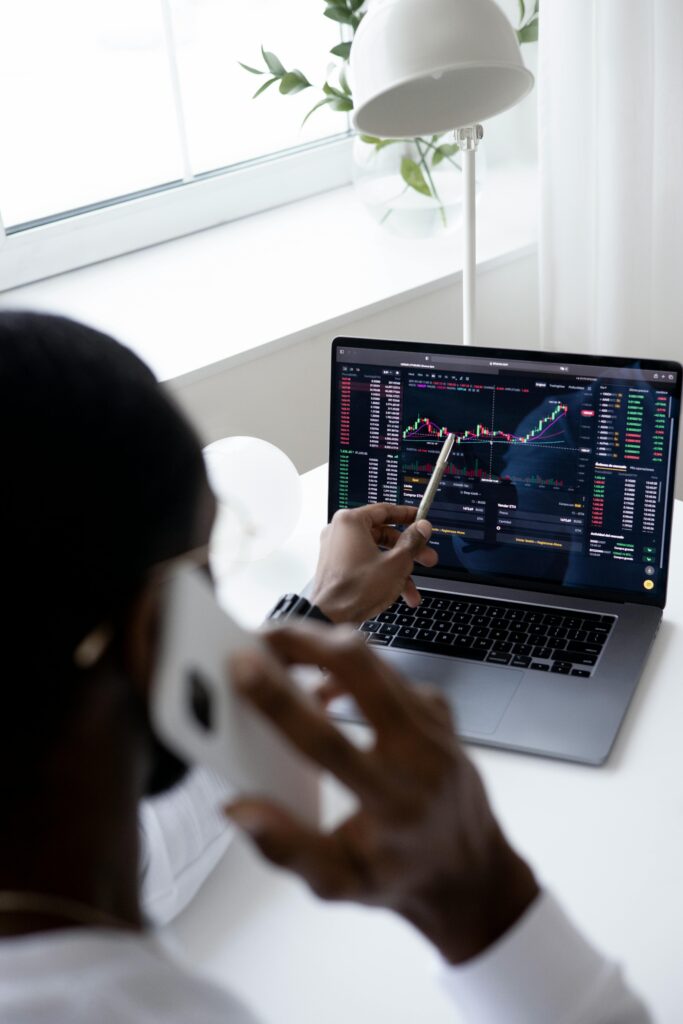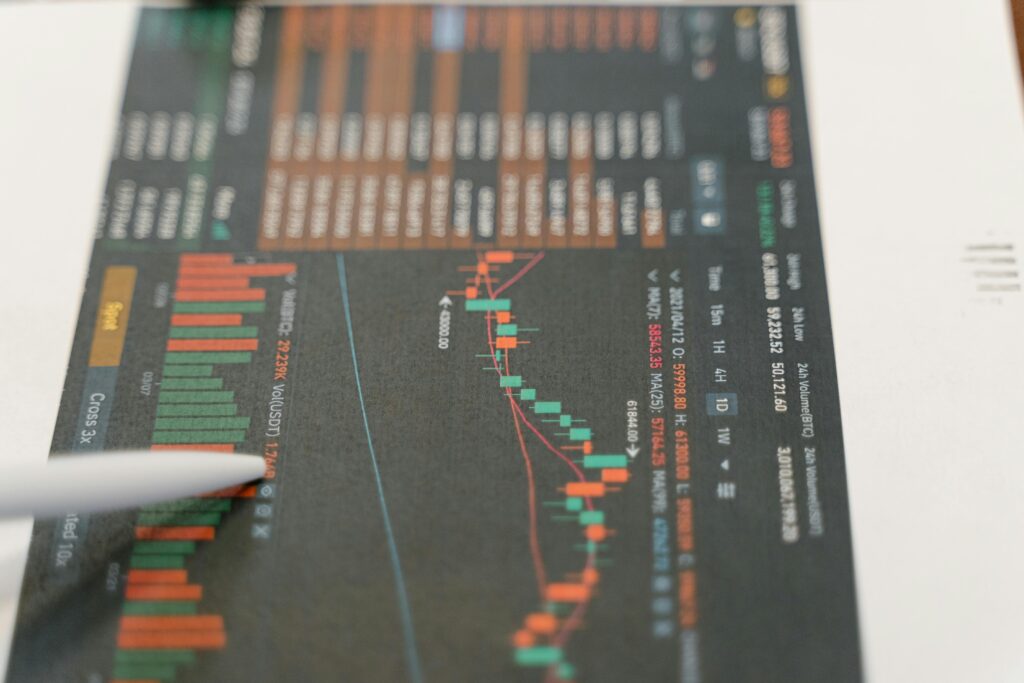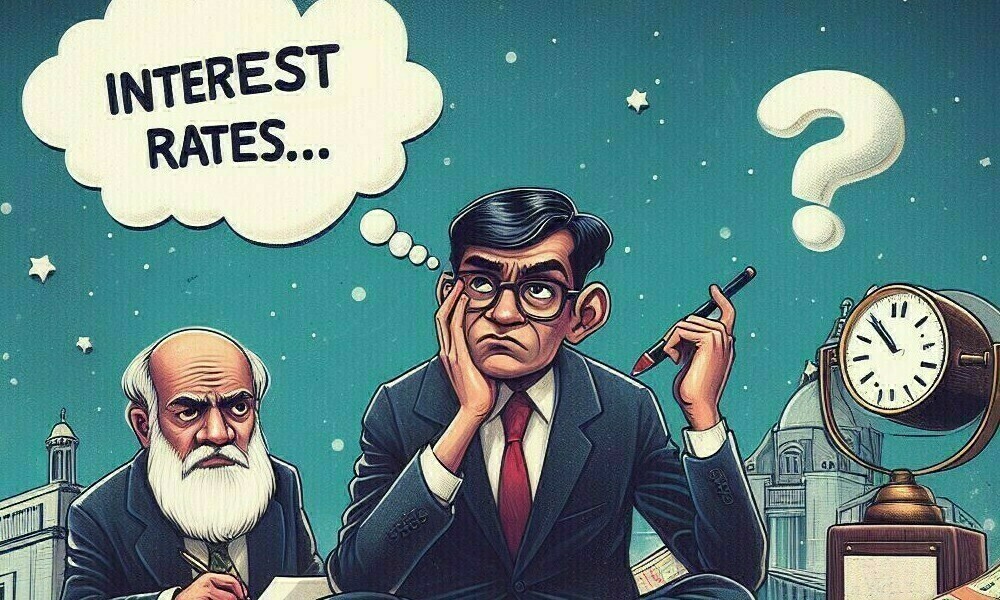stock market mystery
Here’s a head-scratcher: Despite facing the worst pandemic in a century, crushing 40-year-high inflation, and interest rates hitting 20-year peaks, the US stock market isn’t just surviving – it’s thriving. From 2019 through 2024, the S&P 500 delivered a stunning average annual return of nearly 20%, doubling its historical pace. Even amid President Trump’s unpredictable economic moves, including sky-high tariffs unseen since the 1800s, the market has already surged another 8% in 2025.

This relentless rise is baffling experts. Why? Because every theory explaining the boom seems to crumble under scrutiny. The uncomfortable truth? Nobody truly knows what’s fueling this historic stock market mystery – or what could finally stop it.
RELATED THIS – https://financialgoals.online/us-services-sector-slowdown/
The “Fundamentals” Fall Flat
Traditionally, stock prices reflect a company’s real-world health – profits, growth potential, market share. The overall market supposedly dances to the economy’s tune. Sure, “irrational exuberance” might cause bubbles, the thinking went, but reality always bites back. Prices would “correct,” snapping back to levels justified by earnings and economic data.
This logic held… until after the 2008 financial crisis. While the market plunged 46% during the meltdown, the Federal Reserve jumped in, slashing rates to near zero and pumping trillions into the system. Yet, the recovery was weird. The 2010s saw sluggish corporate earnings, slow GDP and productivity growth, and a persistently weak labor market – hardly stellar fundamentals. But the stock market mystery deepened: it tripled in value anyway.
The “Liquidity” Lifeline Fades

This gave birth to the “liquidity theory”: the Fed’s money faucet was the real driver. Flood the system with cash, and it inevitably flows into stocks, lifting prices regardless of the actual economy. This theory peaked dramatically in early 2020. The pandemic crash? The Fed cranked the taps open again. By mid-2020, unemployment was still above 10%, but stocks had rocketed past their pre-pandemic highs.
But the liquidity theory’s reign was short. In 2022, battling inflation, the Fed slammed on the brakes, hiking rates rapidly and pulling $2 trillion out of the system. Predictably, stocks plunged nearly 20%. Then came the twist. The Fed kept raising rates through 2023 and 2024, hitting 20-year highs, and maintained its tight grip. Against all liquidity theory logic, the stock market mystery intensified: the S&P 500 soared nearly 25% in both 2023 and 2024 – its best two-year run this century. As economist Mohamed El-Erian noted, the Wall Street narrative shifted; this wasn’t just about Fed cash anymore.
The AI Gold Rush (Or Bubble?)
This incredible run had another quirk: extreme concentration. Over half the S&P 500’s 2023-2024 gains came from just seven tech titans – Apple, Amazon, Alphabet (Google), Meta (Facebook), Microsoft, Tesla, and Nvidia. Their surges were jaw-dropping: Tesla +286%, Meta +355%, Nvidia +861%! While big firms often lead, this concentration was unprecedented. Crucially, their stock prices raced far ahead of their actual earnings, signaling massive bets on future growth.
Enter the AI theory. This “Magnificent Seven” surge ignited shortly after ChatGPT exploded onto the scene in late 2022. These companies looked perfectly poised to dominate the AI revolution – building the chips (Nvidia), developing the models (Meta, Microsoft, Alphabet), or automating everything (Amazon, Tesla, Apple). Was the stock market mystery simply pricing in an AI utopia?
Many experts smell a bubble. Torsten Sløk of Apollo pointed out that today’s top 10 S&P 500 stocks are more overvalued relative to earnings than the top 10 were at the peak of the 1990s dot-com bubble. Take Nvidia, the first $4 trillion company. Historically, investors pay about $18 for every $1 of a company’s annual earnings (a P/E ratio of 18). Nvidia’s P/E? A staggering 57!
AI believers say this premium is justified by the tech’s world-changing potential. Skeptics, like investment analyst Jim Bianco, warn: “We’ve seen this story play out before.” Revolutionary tech doesn’t guarantee today’s high-flying stocks will be the ultimate winners. If this is an AI bubble, a pop seems inevitable.
IF YOU WANT TO PLAY ONLINE GAMES WITHOUT DOWNLOADING THEM. CLICK HERE: https://gamecorners.online/
The “TACO Trade” (Trump Always Chickens Out?)
A brief scare came in April 2025. Trump announced harsh “Liberation Day” tariffs. Stocks plummeted 12%, the Magnificent Seven falling harder. Then, just a week later, Trump significantly dialed back his plans and de-escalated tensions with China. The market didn’t just recover; it went ballistic, surging nearly 30% to new all-time highs. The “TACO Trade” was born: Trump hates falling stocks and will back down before doing serious market damage. Investors, the theory goes, can confidently buy, knowing Trump will ultimately chicken out (TACO).
But the TACO theory has holes. Tariffs are historically high, and Trump keeps announcing new ones. Yet, the market shrugs. When he announced 15% tariffs on the EU and Japan? Stocks rose. Even sweeping new global tariffs coupled with a weak jobs report barely caused a ripple. The stock market mystery persists, seemingly unfazed.
The Passive Investing Revolution
This leads to a final, intriguing theory, divorced from Trump, AI, or the Fed. Thirty years ago, nearly all mutual fund money was “actively” managed – experts picking stocks trying to beat the market. Today, thanks to regulatory shifts, roughly half of fund assets are in “passive” funds (like Vanguard or Fidelity index funds). These automatically buy baskets of stocks (like the entire S&P 500) based on company size, for ultra-low fees.
Experts like Mike Green of Simplify Asset Management believe this “radical shift” is key to the stock market mystery. Active investors constantly analyze fundamentals and sell at signs of trouble, causing corrections. Passive investors? They set up their retirement accounts, pick a fund, and mostly forget it. They automatically buy stocks, rarely selling, regardless of economic storms. During the brutal early 2020 pandemic meltdown, fewer than 1% of Vanguard’s 401(k) clients sold equities.
This creates a powerful dynamic:
- “Mean Expansion” vs. “Mean Reversion”: Active markets correct high prices. Passive markets? Constant buying pressure can push high valuations even higher. As Green puts it, betting against this flow is “like standing in front of a steamroller.”
- Extreme Concentration: Passive funds buy stocks proportional to their current size. So, they pour more money into already huge companies, making them even bigger and more dominant – a self-reinforcing cycle potentially explaining the Magnificent Seven effect.
The Unanswered Question
Could the passive investing explosion explain why the market seems immune to bad news, keeps climbing against the odds, and is dominated by giants? It’s the most compelling theory yet for the great stock market mystery. But as the last 15 years have shown, just when we think we’ve cracked it, something unexpected happens. The market’s next move remains, as always, the ultimate enigma. Will this theory hold, or will reality finally bite? Only time, and the ever-unpredictable market, will tell.



